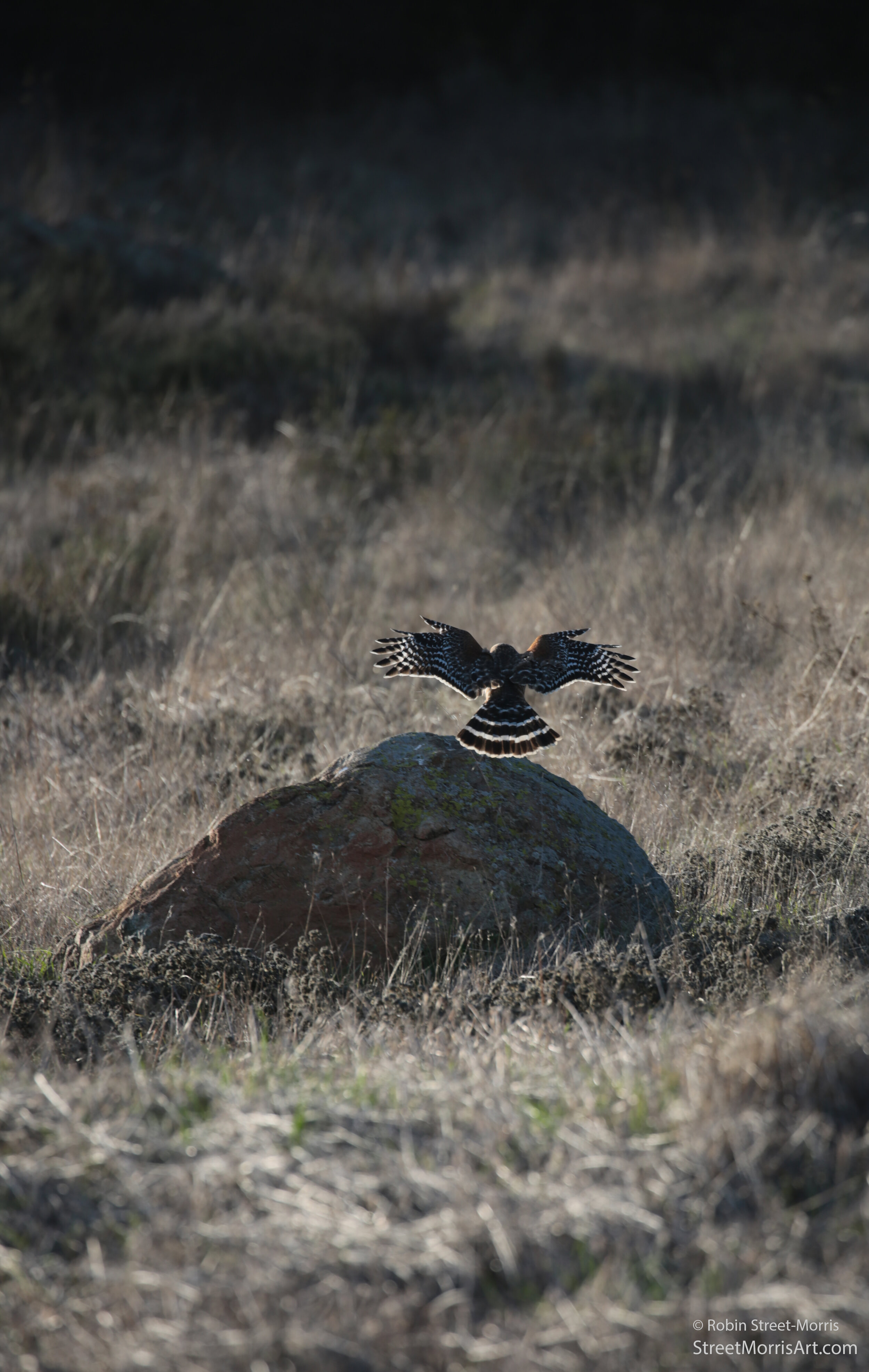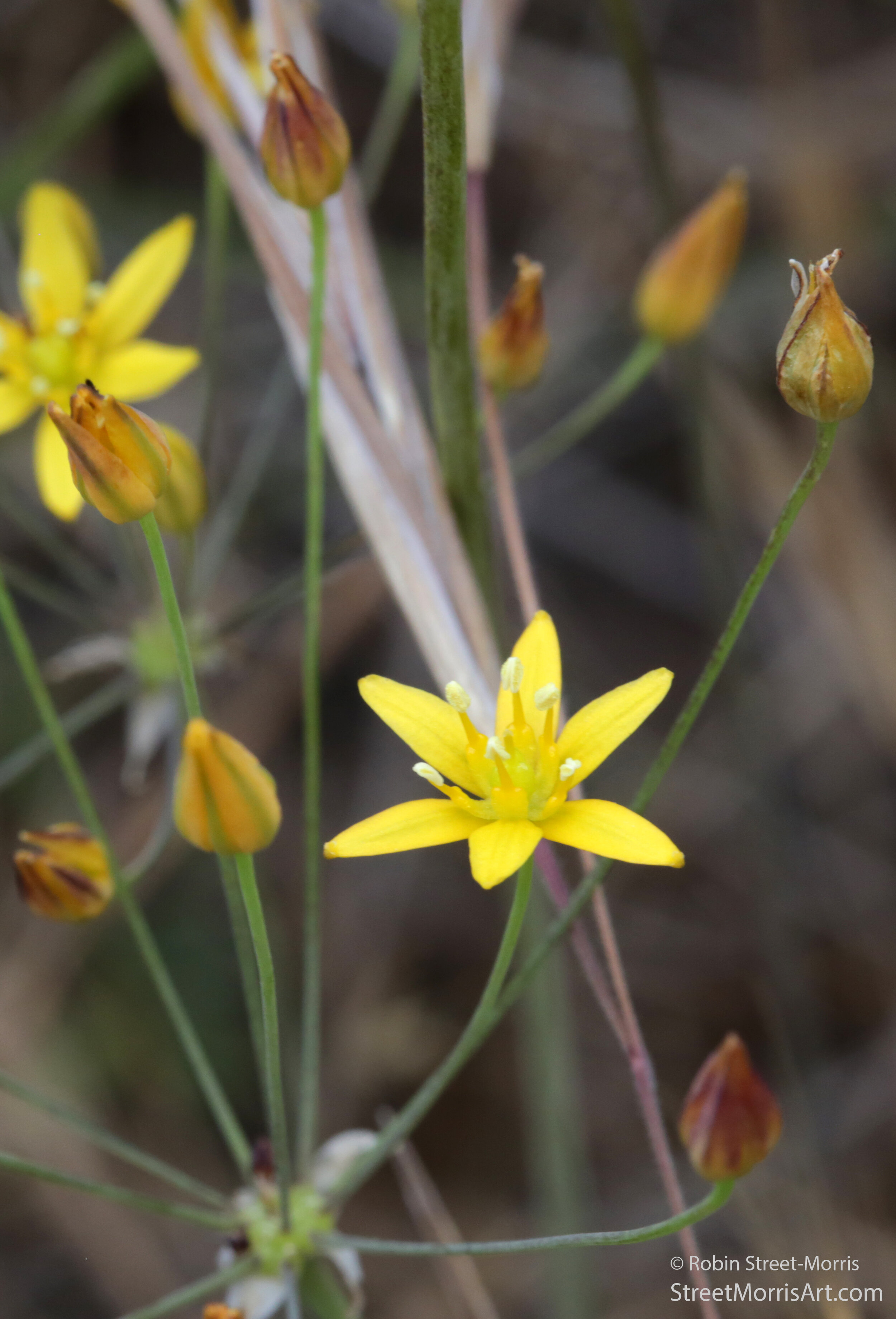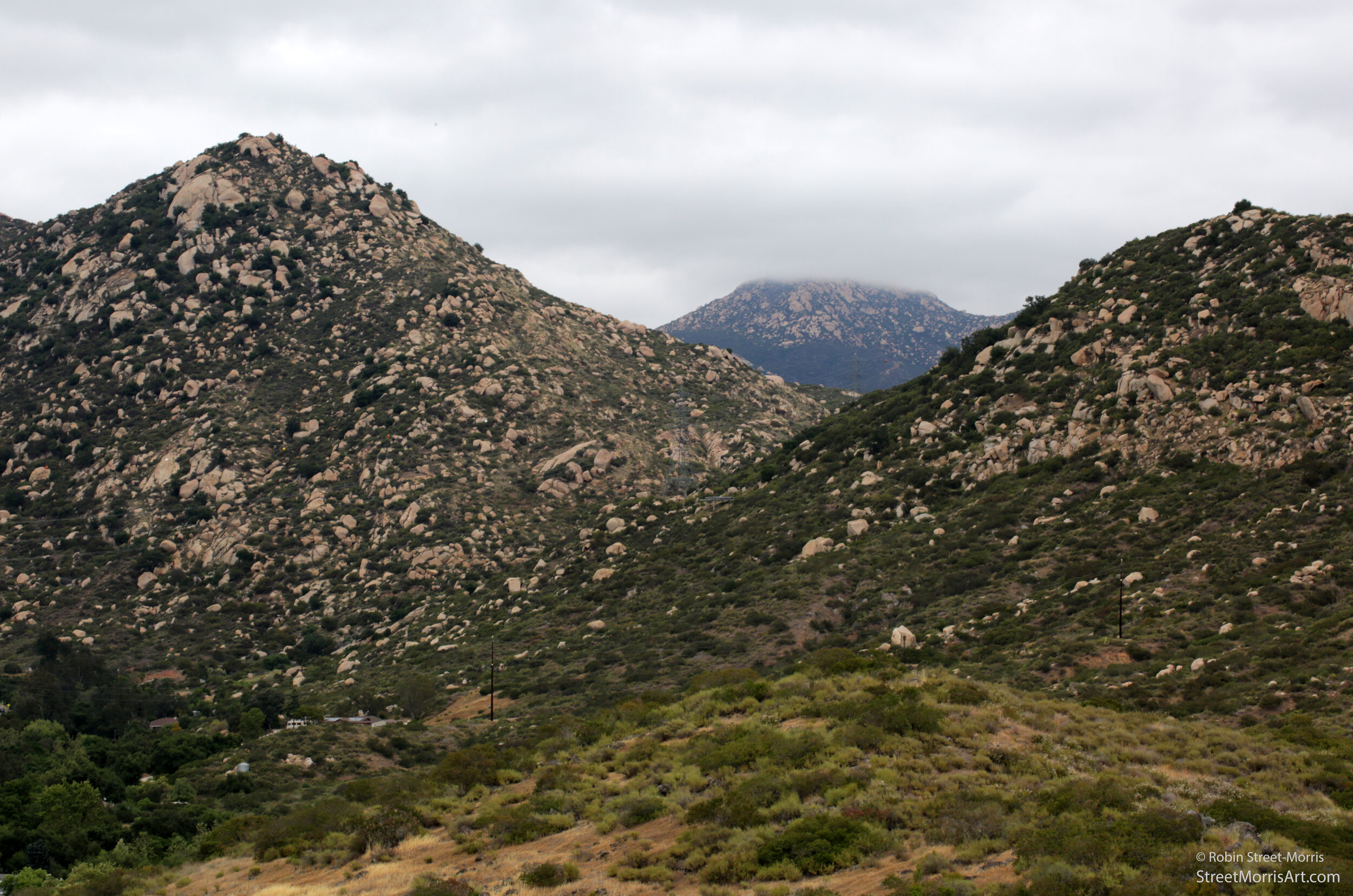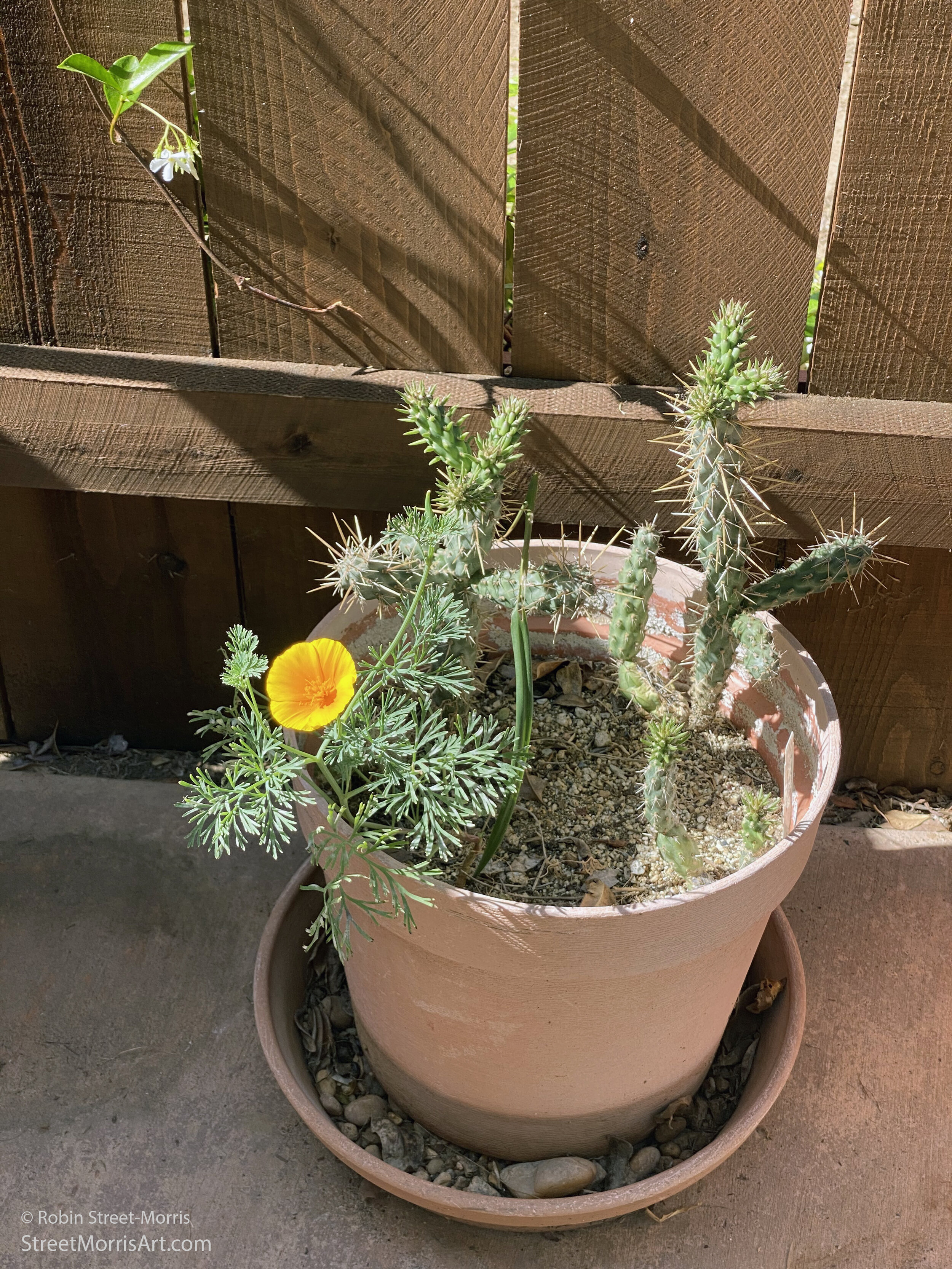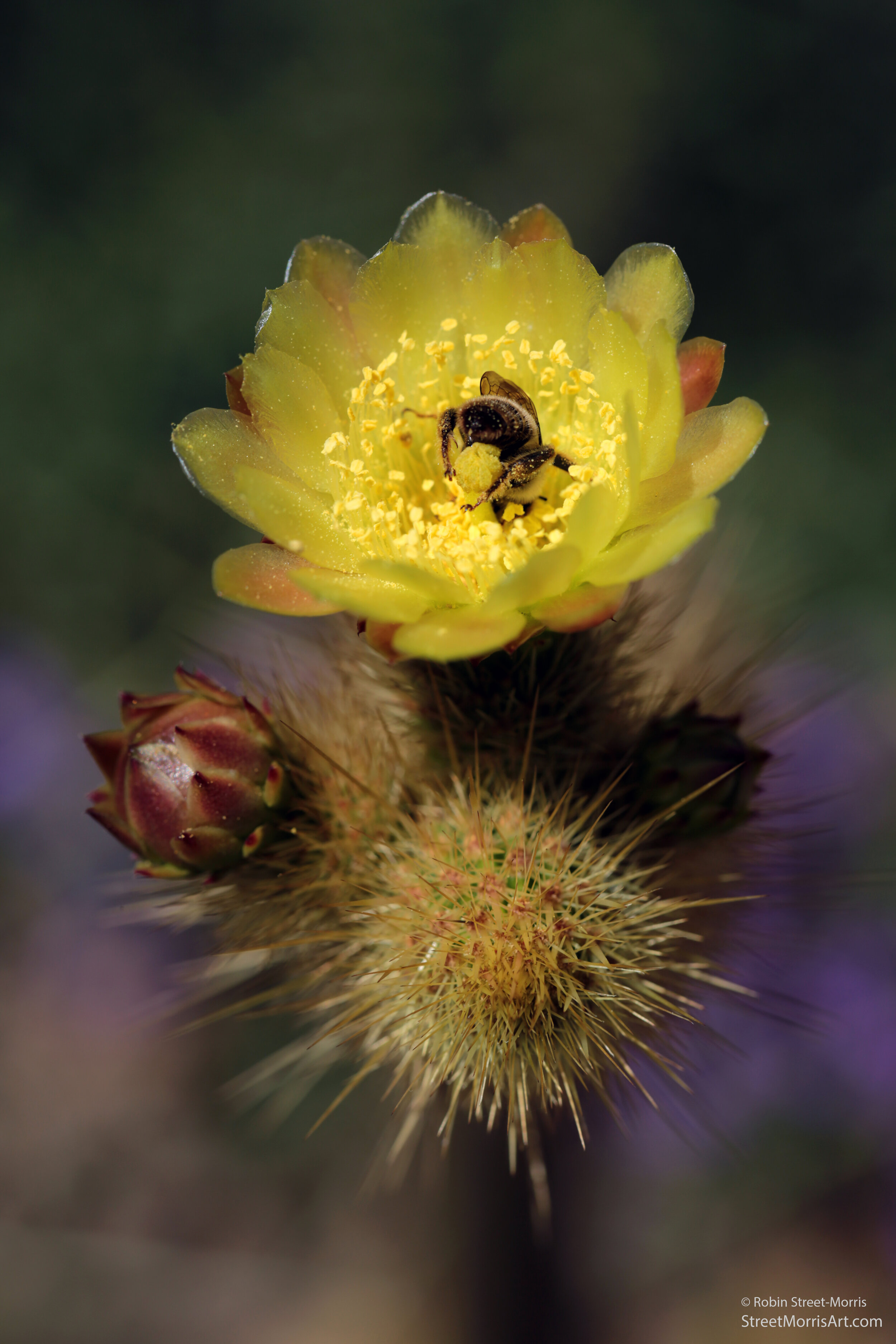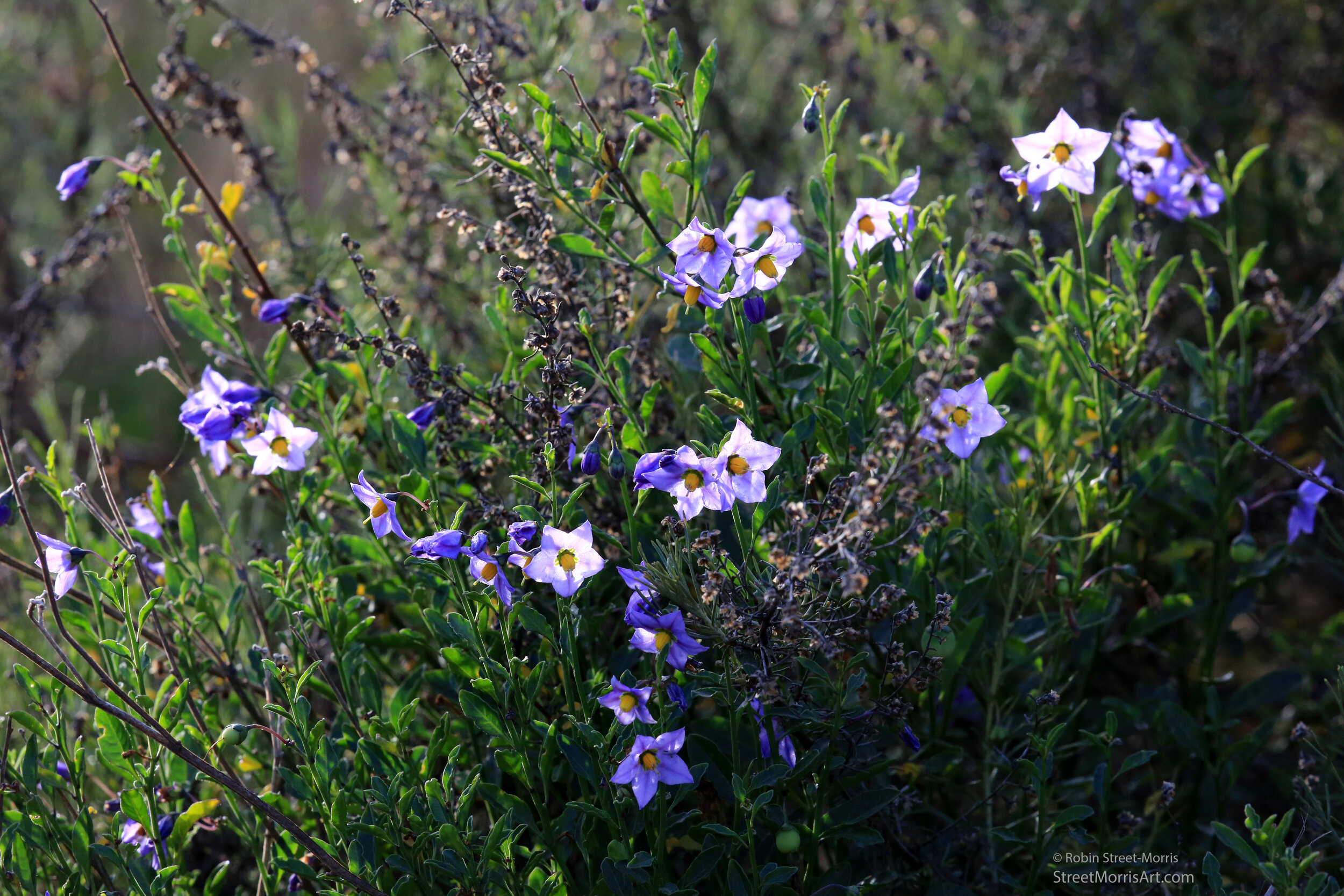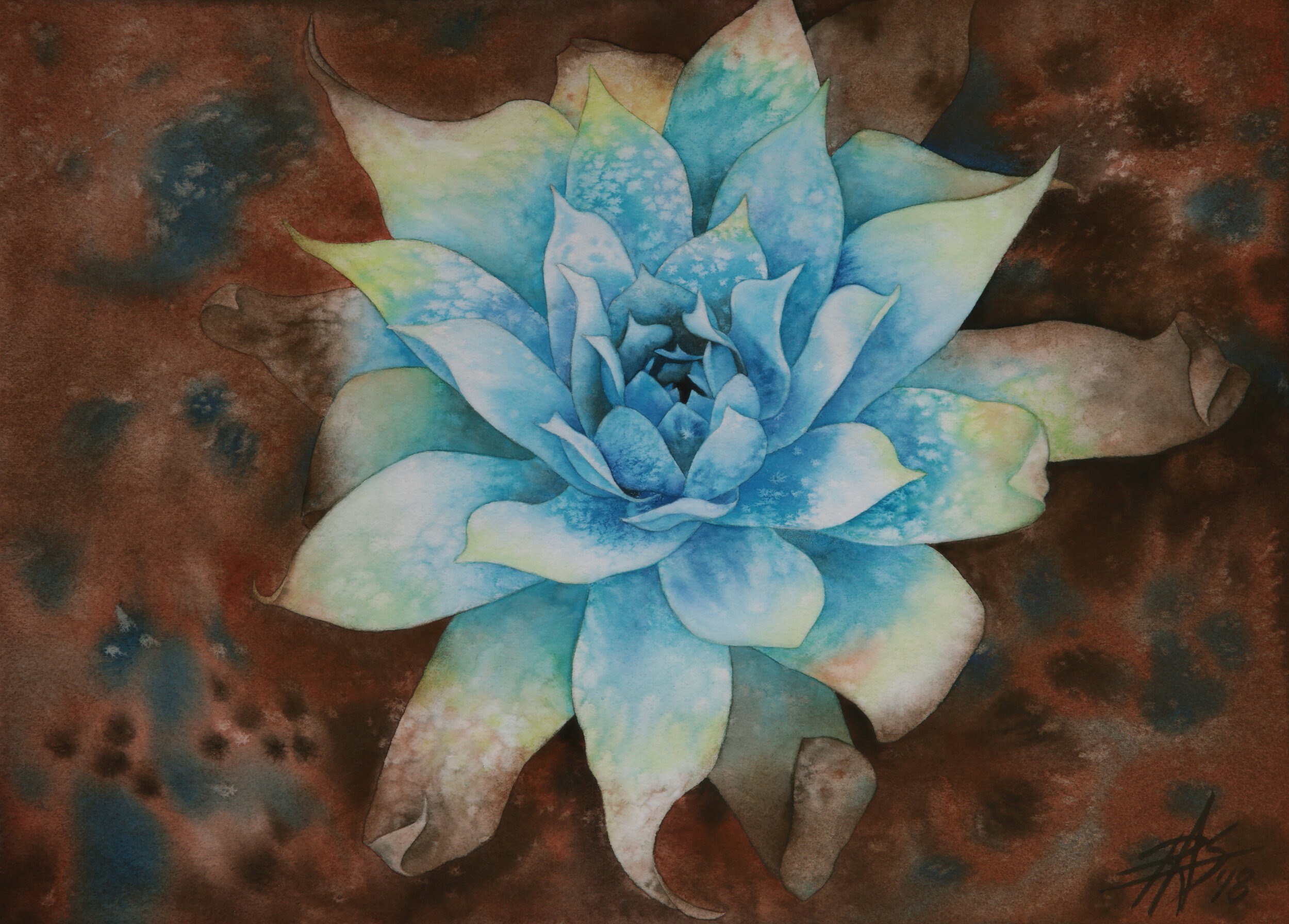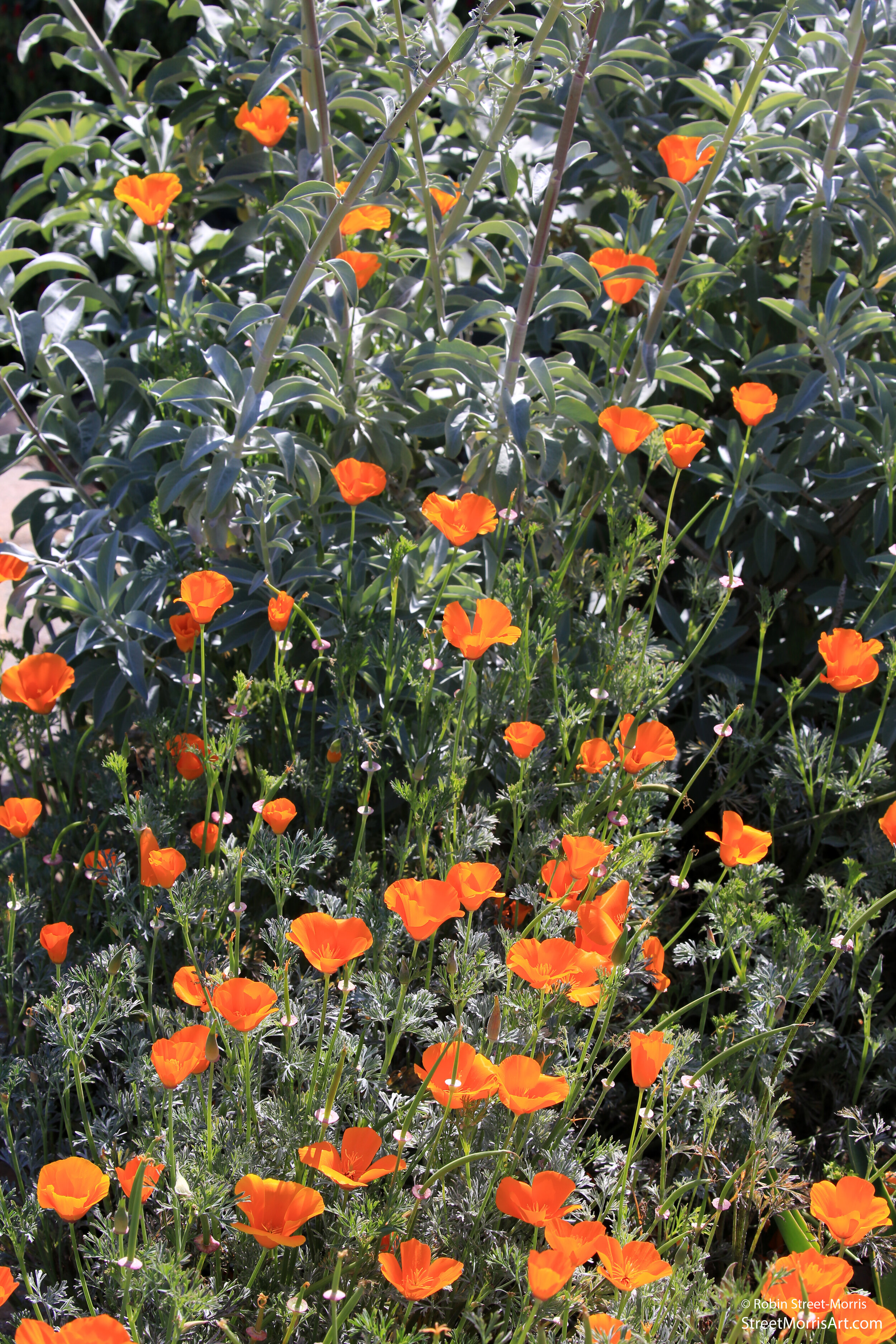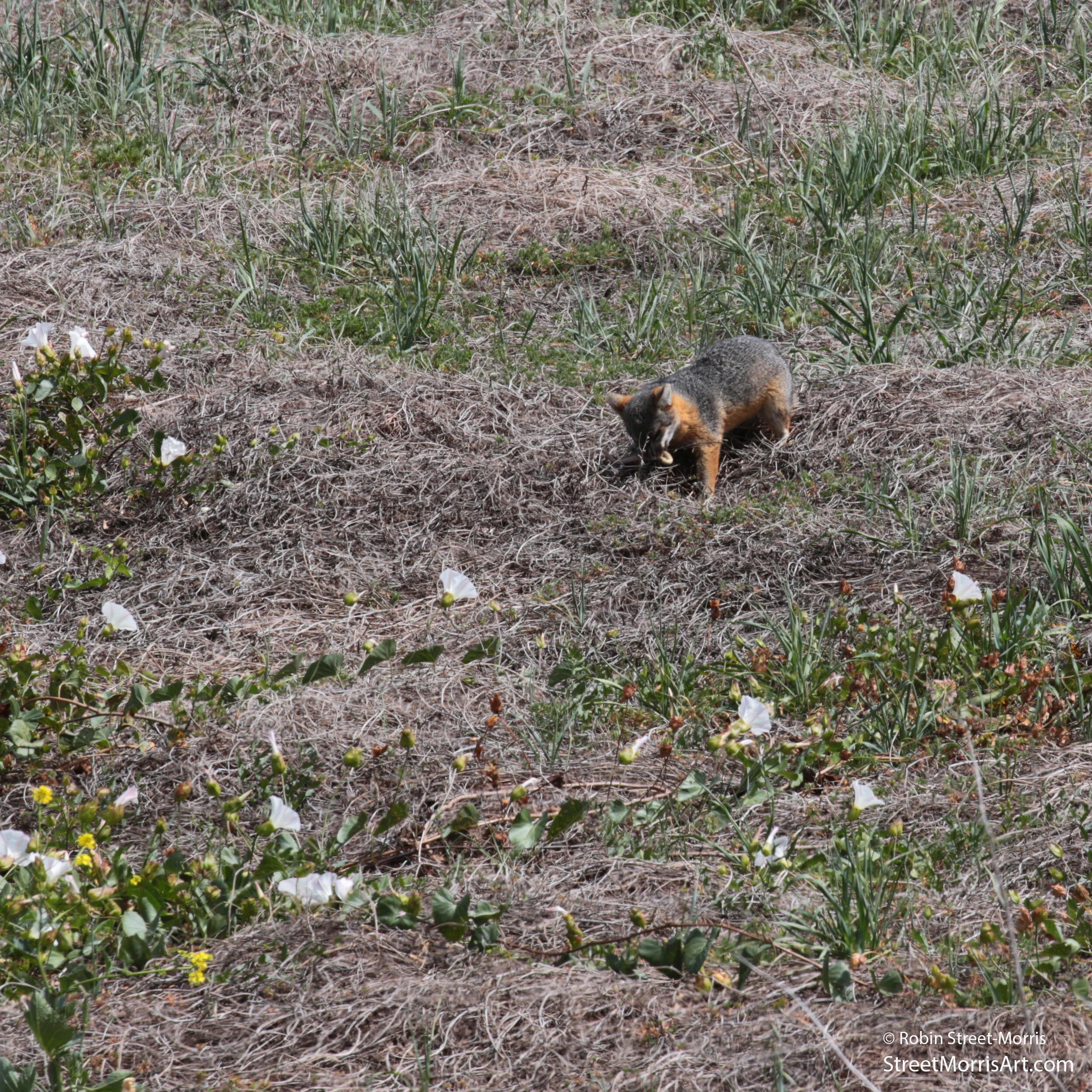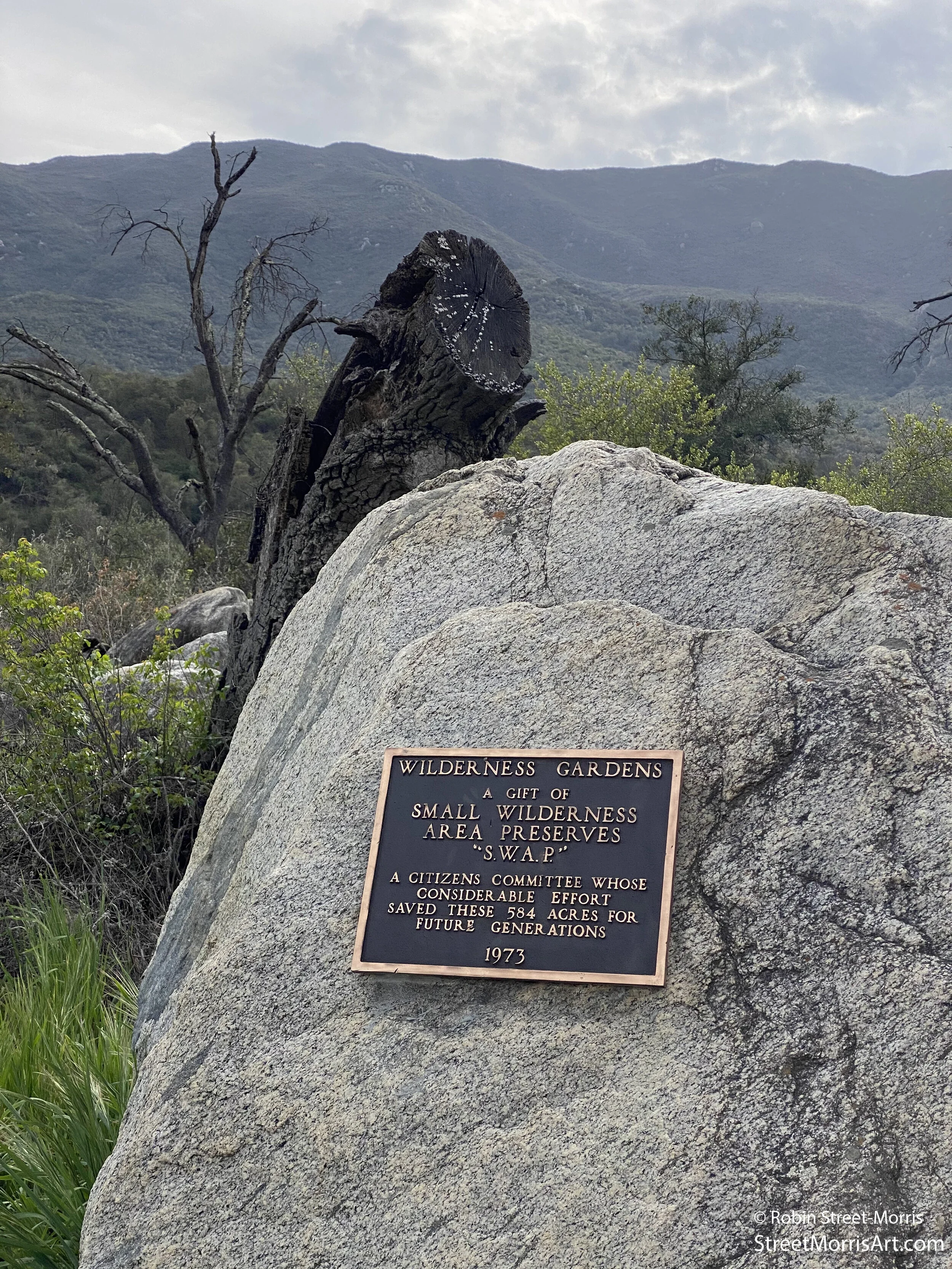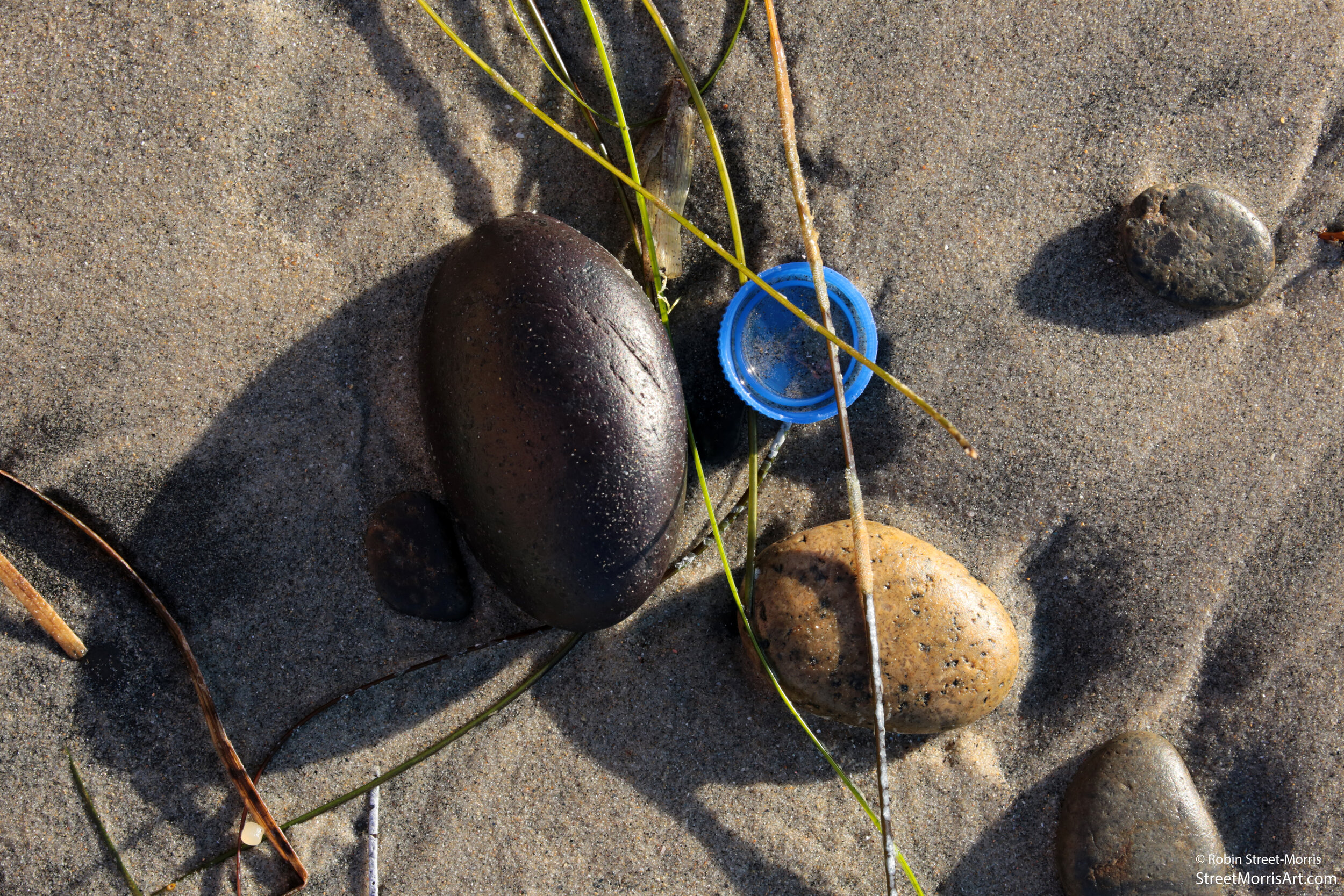This is a piece I'd wanted to make since visiting San Miguel Island, part of Channel Island National Park. The dark creatures you see are dormant giant coreopsis that spring to life in late winter after some rain and produce bright yellow blossoms. I encountered a spring on my way up to this spot that is surely visited by San Miguel island foxes. It's a dream of mine to camp nearby and linger so I can see this subspecies of Urocyon littoralis, the last I'll be able to "catch" not having Navy clearance.
It's still funny to me in a not at all ha ha sort of way that some think southern California doesn't have seasons. It most definitely does. I'm always thinking about what's coming in and going out of bloom in the parks away from our airports and patches of green dominated by grass and palms. The "no seasons” mentality is a challenge because many who've moved here from elsewhere are sometimes quick to think that a native plant that looks tired during the summer is dead. Nope, they're just dormant in many cases. Would a Midwesterner chop down a maple in the winter just because it doesn't have green leaves? For the most part, no.





